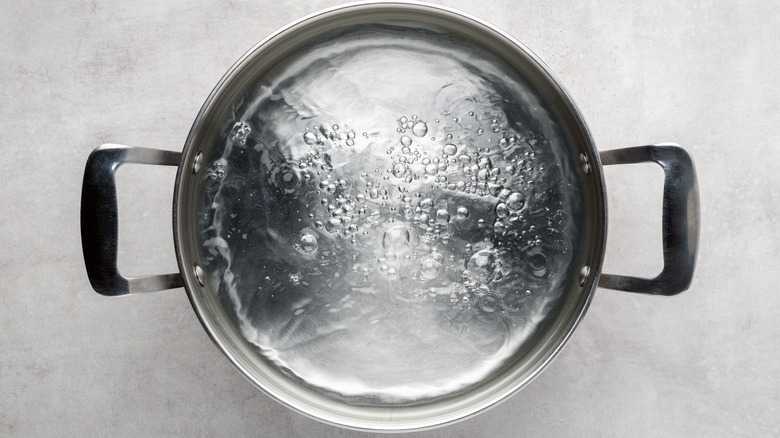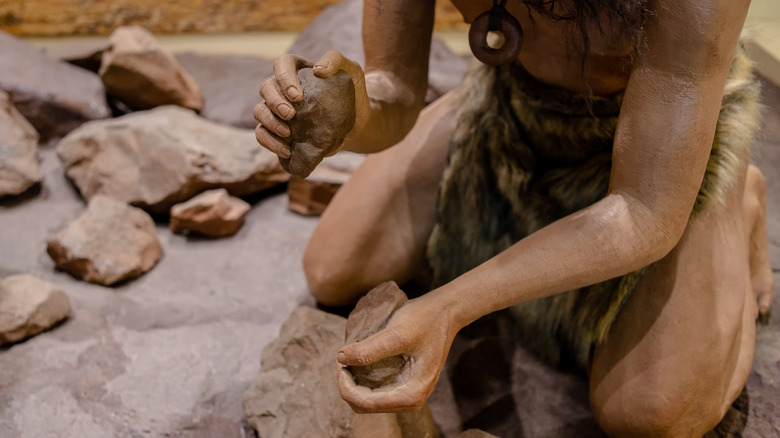How Early Humans May Have First Boiled Food
Roasting, frying, grilling, boiling, broiling... the list of cooking methods goes on and on. These now-conventional methods took thousands of years of innovation, each one a technological breakthrough. Biological anthropologist Richard Wrangham, author of "Catching Fire: How Cooking Made Us Human," suggests that connecting heat with subsistence enabled our modern brain capacity. He even extrapolates the delineation of gender roles arose from cooking. Seeking quicker access to calories through heat application sent men off to hunt and women to gather, rather than combining efforts like other species do, per Harvard Magazine.
In our modern kitchen, boiling is one of the most straightforward cooking techniques (other than using a microwave, perhaps). Hard-boiled eggs and pasta are cornerstones of living independently. Just as in today's cuisine, boiling arose as a way to meet nutritional needs. Our bodies are limited in the amount of protein they can process in one day, and exclusively grilling and consuming meat doesn't satisfy daily carbohydrate and fat needs. For Neanderthals and humans, boiling was a method of extracting fat from the bones, John Speth explained to NPR.
Yet, for early humans, finding a water vessel to accomplish this wasn't straightforward. As described in The Atlantic, a group of archeology doctoral students from the University of York strived to boil water with only a deer hide, mirroring early humans before the advent of pottery. Not everyone succeeded, but those who did reaffirm the most accepted early boiling method.
Early humans boiled water by adding hot stones to water
Artifacts from a cave show that humans used stone boiling as their principal cooking method in the Cantabria region of Northern Spain 15,500 years ago (via Science Direct). Gathering some water above a hearth and throwing some hot rocks in seems easy enough, right? Well, turns out it's not so simple — rocks with air or water bubbles inside will break apart and explode. Research conducted in Puget Sound tested various rock cooling techniques to see which can withstand boiling; published on Science Direct, the report demonstrates how early humans could have developed boiling techniques by experimenting with surrounding materials.
Although wet-stone boiling has the most academic research (since material artifacts can remain intact over thousands of years), there are possibilities for other boiling methods. In Northern Tanzania, scientists discovered that 1.8-million-year-old humans lived next to boiling springs. It's not unlikely that, long before the advent of fire, an animal could fall into the springs and humans would eat the cooked meat, per Daily Mail.
John Speth also outlined another theory in NPR: Using a water bag made from hide or bark. Inspired by Les Stroud of "Survivorman," Speth noticed that a normally flammable material wouldn't ignite if it contained water. Although the physical evidence of this technique wouldn't survive the elements, it's another likely possibility. Early humans were a crafty bunch.

